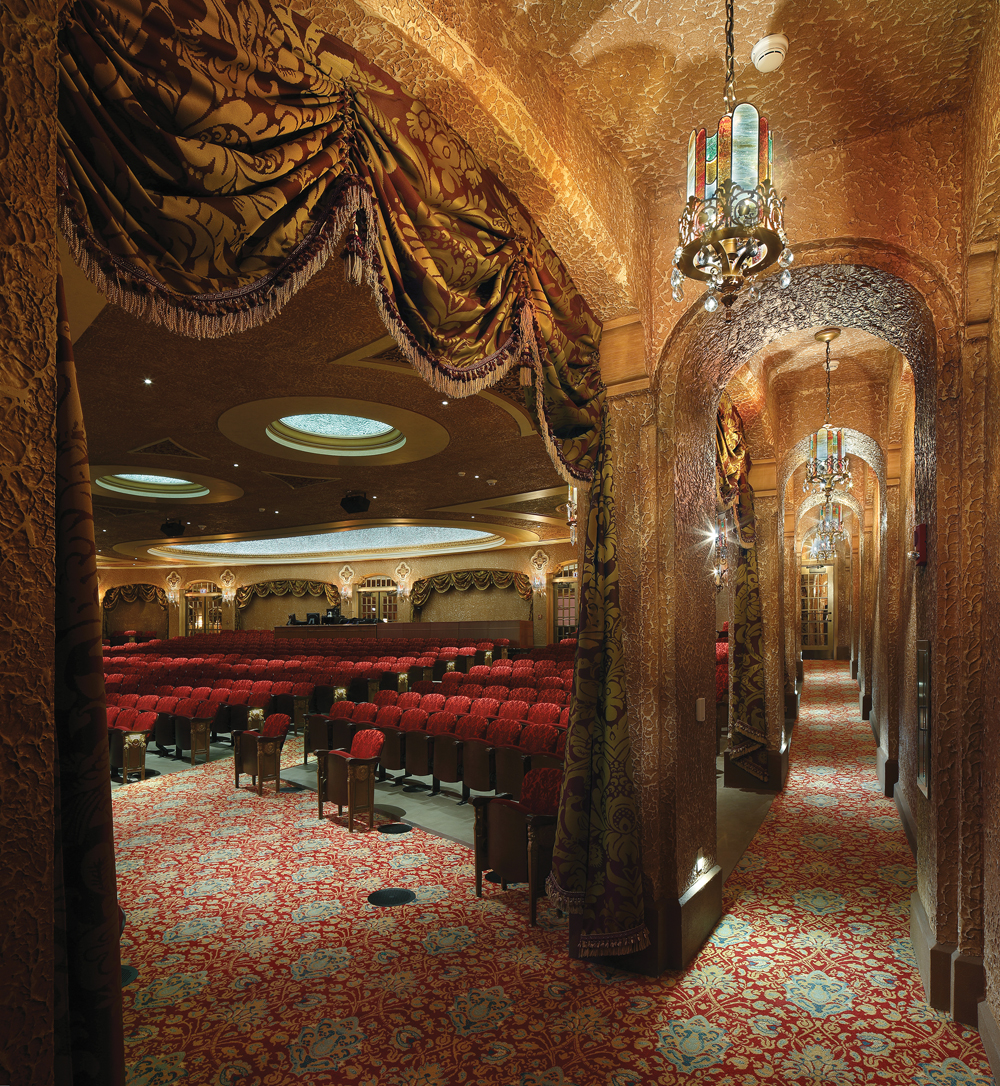Green-oriented reconstruction has generated major buzz in the past few years, even as the commercial building market has struggled. Reports like this year’s “Top 10 Megatrends” from sustainability guru Jerry Yudelson, PE, LEED Fellow, continue to emphasize the potential. Yudelson points out that LEED EB:O+M has been the fastest-growing LEED rating system for three years running, underscoring the current focus on existing buildings. (For more trends information, don’t miss Yudelson’s keynote at BUILDINGChicago.)
The green reconstruction principle transcends HVAC and plumbing upgrades, cladding and glazing improvements, and roof replacement. Increasingly, owners recognize that existing buildings represent a considerable resource in embodied energy, which can often be leveraged for lower front-end costs and a faster turnaround than new construction. The combination of speed, savings, and conservation is powerful in an era when budgets remain tight. Not every building is worth saving, but when the math makes sense, the results can be compelling.
For instance, the University of Cincinnati recently opted to renovate its Morgens Hall student residence tower for $25 million, saving an estimated $15 million compared with an equivalent new project. “We retained the shell, gained square footage in the dorms by enclosing balconies, and reused plant connections instead of having to extend utilities to a new building,” says Jeff Millard, Principal/COO of KLH Engineers. “It’s all about making dollars go farther on buildings and systems.”
Public clients are understandably trying to maximize scarce funds, especially for projects that lack a prestige factor that might attract donors. But private-sector owners and developers are also taking a closer look at existing buildings, with strategies ranging from targeted sustainability retrofits—often involving low-risk Energy Performance Contracts—to complete functional reinventions.
TOP RECONSTRUCTION ARCHITECTURE FIRMS
2012 Reconstruction Revenue ($)1 Stantec $280,352,6522 HOK $134,237,4003 HDR Architecture $114,065,0004 Cannon Design $87,000,0005 Wight & Co. $78,367,6006 HKS $72,000,0007 HMC Architects $62,356,9498 Astorino $55,944,0009 Leo A Daly $55,674,77510 Perkins+Will $54,045,000
TOP RECONSTRUCTION ENGINEERING FIRMS
2012 Reconstruction Revenue ($)1 URS Corp. $292,591,4052 STV $125,755,0003 Wiss, Janney, Elstner Associates $72,500,0004 Science Applications International Corp. $57,788,8755 Middough $54,100,0006 Dewberry $53,086,5197 SSOE Group $52,518,4178 Thornton Tomasetti $50,250,5249 Syska Hennessy Group $49,258,50110 AKF Group $45,000,000
TOP RECONSTRUCTION CONSTRUCTION FIRMS
2012 Reconstruction Revenue ($)1 Structure Tone $2,001,631,4002 DPR Construction $1,581,855,0873 Gilbane $1,555,672,0004 Turner Corporation, The $1,547,270,0005 Whiting-Turner Contracting Co., The $1,103,049,3806 PCL Construction Enterprises $796,283,8337 HITT Contracting $789,024,8068 Pepper Construction Group $753,093,0009 Balfour Beatty $671,639,24710 Barton Malow $597,731,773
Giants 300 coverage of Reconstruction brought to you by Duro-Last www.duro-last.com
For one recent project at Polaris Fashion Place Mall in Columbus, Ohio, FRCH assisted with a renovation and tenant fit-out that required the Building Team to move a pair of 20-ton escalators a quarter of the length of the facility. The project took extensive logistical planning and some overnight labor, but it opened up attractive space for an H&M store and cost about 25% less than new escalators.
“In the heyday of mall development and deal-making, this level of complexity and concentrated focus on saving, reusing, and creative thinking would not have been considered,” says Harkin. “As margins, tenant requirements, and limited new mall product have evolved, we find ourselves part of a new reality.”
When historic properties or urban redevelopment are involved, many states and cities are providing important financial support for reconstruction. Emily Meyer, Associate Developer, Ryan Companies US, says, “Redevelopment of urban core areas and reuse of existing infrastructure provide benefits that are recognized and incentivized by local, state, and federal governments. Reusing existing structures, inherently green, also provides working and living space in higher density, walkable neighborhoods.”
Ryan recently renovated a Beaux Arts federal courthouse as a new City Hall for Cedar Rapids, Iowa, and is converting four stories of Davenport’s historic 12-story Wells Fargo bank tower into apartments. The project will provide needed market-rate housing in place of unneeded offices, while helping to preserve a city icon.
In Detroit, the century-old Whitney Building is the target of a just-announced $82 million reconstruction. Contractor Walbridge will transform the landmark—vacant since 2000—into a hotel and apartment property. The players include Starwood Hotels (which will locate its boutique Aloft brand in the Whitney), the Roxbury Group, and Trans Inns Management. Crucial to making the numbers work: an $8.5 million loan from the Michigan Community Revitalization Program, a $9.8 million state brownfield redevelopment tax credit, and $12.4 million in state historic tax credits.
State or municipal tax support is usually essential for making such large-scale renovations a reality. Government willingness to support the projects reflects growing recognition that reconstruction, not just new development, can produce an economic engine. Minnesota adopted a tax credit for historic rehabs in 2010; Iowa strengthened its program this year; and Wisconsin is also moving to increase its state credits.
The prospect is a bit less sunny on the federal side, however. Last summer, the Third Circuit Court of Appeals disallowed a third-party investment in the historic rehabilitation of a New Jersey convention center. Known as the Boardwalk Decision, the ruling overturned a lower court’s determination and cast a cloud over the interpretation of federal tax benefits for outside investors in historic property reconstruction, according to Ryan Companies’ Meyer (http://bit.ly/BoardwalkDecision). “Until the IRS issues further guidance, investors will remain skittish, keeping many projects from moving forward,” she says.
Related Stories
Design Innovation Report | Apr 27, 2023
BD+C's 2023 Design Innovation Report
Building Design+Construction’s Design Innovation Report presents projects, spaces, and initiatives—and the AEC professionals behind them—that push the boundaries of building design. This year, we feature four novel projects and one building science innovation.
Airports | Apr 18, 2023
India's mammoth new airport terminal takes ‘back to nature’ seriously
On January 15, 2023, Phase 1 of the Kempegowda International Airport’s Terminal 2, in Bengaluru, India, began domestic operations. The 2.75 million-sf building, designed by Skidmore, Owings & Merrill (SOM), is projected to process 25 million passengers annually, while providing its travelers with a healthier environment, thanks to extensive indoor-outdoor landscaping that offers serenity to what is normally a frenzied experience.
Architects | Apr 6, 2023
Design for belonging: An introduction to inclusive design
The foundation of modern, formalized inclusive design can be traced back to the Americans with Disabilities Act (ADA) in 1990. The movement has developed beyond the simple rules outlined by ADA regulations resulting in features like mothers’ rooms, prayer rooms, and inclusive restrooms.
Airports | Feb 28, 2023
Data visualization: $1 billion earmarked for 2023 airport construction projects
Ninety-nine airports across 47 states and two territories are set to share nearly $1 billion in funding in 2023 from the Federal Aviation Administration. The funding is aimed at help airports of all sizes meet growing air travel demand, with upgrades like larger security checkpoints and more reliable and faster baggage systems.
Intelligent Lighting | Feb 13, 2023
Exploring intelligent lighting usage in healthcare, commercial facilities
SSR's Todd Herrmann, PE, LEEP AP, explains intelligent lighting's potential use cases in healthcare facilities and more.
Giants 400 | Feb 9, 2023
New Giants 400 download: Get the complete at-a-glance 2022 Giants 400 rankings in Excel
See how your architecture, engineering, or construction firm stacks up against the nation's AEC Giants. For more than 45 years, the editors of Building Design+Construction have surveyed the largest AEC firms in the U.S./Canada to create the annual Giants 400 report. This year, a record 519 firms participated in the Giants 400 report. The final report includes 137 rankings across 25 building sectors and specialty categories.
Giants 400 | Feb 6, 2023
2022 Reconstruction Sector Giants: Top architecture, engineering, and construction firms in the U.S. building reconstruction and renovation sector
Gensler, Stantec, IPS, Alfa Tech, STO Building Group, and Turner Construction top BD+C's rankings of the nation's largest reconstruction sector architecture, engineering, and construction firms, as reported in the 2022 Giants 400 Report.
Cladding and Facade Systems | Dec 20, 2022
Acoustic design considerations at the building envelope
Acentech's Ben Markham identifies the primary concerns with acoustic performance at the building envelope and offers proven solutions for mitigating acoustic issues.
Digital Twin | Nov 21, 2022
An inside look at the airport industry's plan to develop a digital twin guidebook
Zoë Fisher, AIA explores how design strategies are changing the way we deliver and design projects in the post-pandemic world.
Giants 400 | Nov 14, 2022
Top 65 Airport Terminal Engineering + EA Firms for 2022
AECOM, Jacobs, Arup, and Burns & McDonnell head the ranking of the nation's largest airport terminal engineering and engineering/architecture (EA) firms for 2022, as reported in Building Design+Construction's 2022 Giants 400 Report.


















